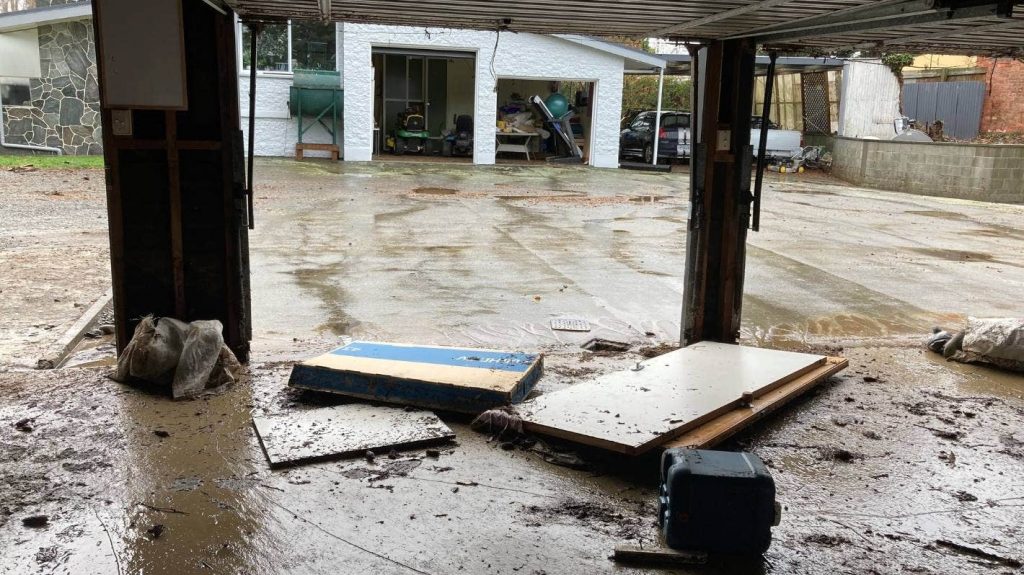
There is a warning flood-hit homeowners face financial costs long after the water has receded.
Insurers are becoming increasingly sensitive to flood risk, which means owners of flood-prone homes may have to pay higher premiums for their cover, or find their insurers impose high excesses on flood claims.
Owners of flooded homes may also face a long-term house price uncertainty as the frequency of extreme weather events increases.
Rene Swindley, chief executive of insurer Initio, said when people’s homes were hit by natural disaster events, such as the flooding in Canterbury, they always came out poorer.
“You can have insurance, and lose a house in a flood, or an earthquake, and you don’t get everything back because there is a whole lot of inconvenience and uninsured costs you never get back,” Swindley said.
These were not usually catastrophic costs and homeowners should not find their homes become uninsurable, or face rapid increases in their premiums.
But, Swindley said: “Looking to the future, people are still going to be able to get insurance, but they will be on much more property-specific terms.”
Already, it often cost more to insure a flood-prone home, Swindley said, but it was often not a huge amount more, and in some cases homeowners instead only had to put up with high flood claim excesses.
“That could be up to $10,000, which is from some of the examples we’ve seen. Normally we are looking in the range of $2500 to $5000,” Swindley said.
“This is an imposed excess. The customer does not have a choice about it,” he said.
But, the insurance industry had been waking up to flood-risk.
“There have become whole areas in certain parts of coastlines in New Zealand which are uninsurable in respect of flooding, or rising sea levels, and that has a massive knock-on effect because you can’t get mortgage funding,” Swindley said.
But, he said: “The same approach is not being taken with rivers and watercourses.”
That would change, however, he predicted.
“I think we will end up in a similar place to coastal properties,” he said.
“Insurers are getting smarter in the way they look at flood risk, and other natural hazards.”
Initio had mapped every property in the country, and the map included a flood risk overlay.
“You will see over the next few years that there will be a huge acceleration in getting house-specific data,” Swindley said.
Tower took the lead in that process, which resulted in some customers in earthquake-prone homes facing much higher premiums, and others in lower-risk places, such as Auckland, getting cuts to their premiums.
Professor Graham Squires from Massey University’s School of Economics and Finance said research had shown there could be an immediate impact on the prices buyers were willing to pay for homes that had flooded.
“The studies seem to say there’s a price reduction in the short-term, but after five years, the events are forgotten about, if they are not repeated,” Squires said.
The studies were from overseas, though the effect has been noted as a risk in New Zealand.
When Taupō District Council was preparing to update its flood hazard plans in 2015, it commissioned a report into what might happen to the prices of homes in areas it designated at medium and high-risk of flooding.
Report author Alex Keys wrote that properties tagged with the highest flood notification would be of most concern for purchasers who undertook a higher level of due diligence prior to purchase.
“Values of developed properties with this notation may experience a discount in the market, particularly if the property had previously not been identified within a Flood Hazard Area,” Keys said in the report.
But, he wrote: “The level of this would be difficult to predict with any certainty, and would depend upon a number of factors including the reporting around Land Information Memorandum (LIM) reports, post notation adverse publicity, media attention…”
And, Keys wrote: “I believe this would be relatively short term (up to three years) with public concerns and anxiety eventually diminishing with the market adopting a new level around these properties. The level of discount over the longer term for developed properties may be up to 10 per cent, however the market will find its own level.”
Keys told Stuff the exact impact of the changes that followed had not been studied.
There was a long-term risk that prices of flood-prone properties would not follow the same track as similar homes that were not prone to flooding, said David Dyason, senior lecturer in property studies at Lincoln University.
It could lead to prospective buyers favouring other, less flood-prone areas, he saud.
“This could lead to a longer-term impact,” Dyason said.
“The longer-term impact is a change in household behaviour when considering what to buy. Each environmental shock adds another aspect to be evaluated into the mix,” he said.
“This means that prospective buyers will request/require more due diligence, pushing up some of the administrative costs associate with buying/selling a house. The areas prone to flood is further likely to include this risk into the market price of the property. This could result in lower growth values in the long run for areas, prone to flooding compared to those that are not.”
However, he said: “When the housing market is as buoyant as it currently is, these areas that are prone to flooding could experience high growth values, if no recent major flooding occurred, especially if they have a lower base market price. This is mainly driven by affordability.”
The impact might be felt differently on different properties, depending on their characteristics, and work by local councils on flood mitigation infrastructure, Squires said.